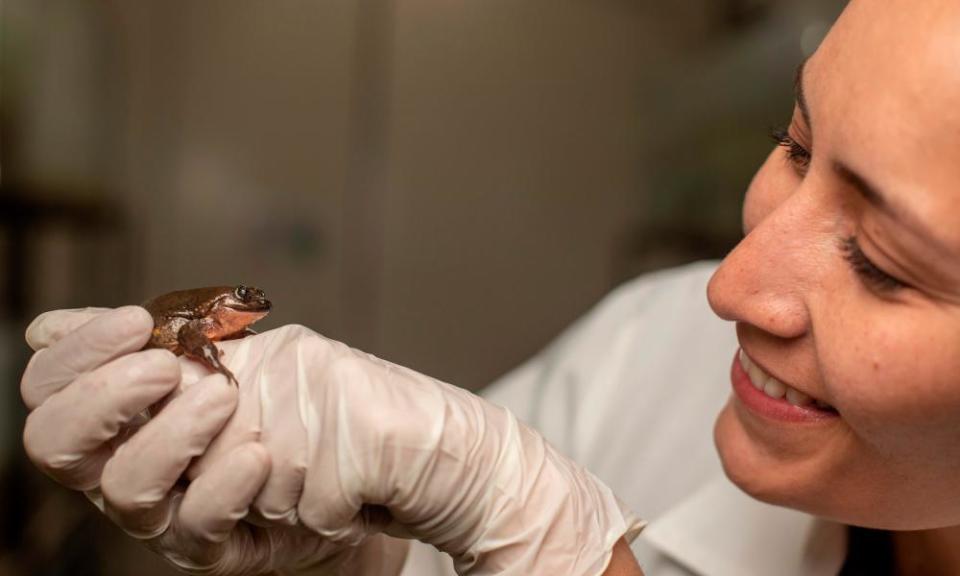Juliet and friends found for Romeo the lonely water frog

For 10 years, Romeo, the last known Sehuencas water frog on the planet, led a solitary life in a conservation centre in Bolivia. Now scientists have found him a Juliet.
The adult female was among five frogs found on an expedition into Bolivia’s cloud forest. The $25,000 search was funded by donations gathered after Romeo’s keepers posted a lonely hearts profile on the dating website Match.com on Valentine’s Day last year.
“Now the real work begins – we know how to care for this species in captivity, but now we will learn about its reproduction,” said Teresa Camacho Badani, of the Museo de Historia Natural Alcide d’Orbigny in Cochabamba, who led the expedition. The scientists hope to prevent the extinction of the frog by breeding new generations and eventually releasing them back into the wild.
The frog was once abundant in the streams and ponds of Bolivia’s cloud forest, but there has been a precipitous decline of all water frog species in Bolivia, Ecuador and Peru due to a combination of climate change, habitat destruction, pollution, a deadly amphibian disease and the introduction of alien trout species that eat frog eggs.
Freshwater species including frogs are the worst hit by the sixth mass extinction that many scientists believe humanity is causing. Freshwater populations have crashed by 83% since 1970.
Badani said the team had been close to giving up when the frogs were discovered. “We were exhausted after searching all day with no results,” she said. “We looked in streams that had the perfect conditions, but we didn’t see any species of frogs, water frog or otherwise.
“We decided to look in one more stream before returning to the camp. We weren’t too hopeful because there was a waterfall at the end of the stream that would stop us from moving forward. But we took a chance anyway and about four metres away from the waterfall I saw a frog jump.
“When I pulled it out, I saw an orange belly and suddenly realised I had in my hands the long-awaited Sehuencas water frog,” she said. “My first reaction was to yell ‘I found one!’ and the team came running over to help me and pull the frog to safety. It was an incredible feeling.”
In total, the team found three males and two females.
Chris Jordan, of Global Wildlife Conservation, which was also part of the expedition, said: “There is always risk in bringing animals in from the wild to build an insurance population. But at this point it seems there are too few water frogs in the wild for them to retain a viable population, so there’s a greater risk if we don’t do anything.”
The five frogs are now in quarantine as they get used to their new home and will be treated for the deadly infectious disease chytridiomycosis, which is partly responsible for the steep decline in amphibians around the world. After this, Romeo will meet his Juliet.
Badani said: “Juliet likes worms as much as Romeo. She is very strong and swims very fast. She looks great and is healthy. Opposites attract: while Romeo is very shy, Juliet is not at all. So we think she will make an excellent match for Romeo.”
Breeding and reintroduction programmes have worked for other species including the Mallorcan midwife toad in Spain. At least 10 populations of this species have been successfully reintroduced to the wild.
Romeo’s story seems likely to have a happier ending that that of Toughie, a Rabbs’ fringe-limbed tree frog originally from Panama and also the last known member of his species. He died in 2016 after 11 years in the Atlanta Botanical Garden and the species appears now to be extinct.

 Yahoo News
Yahoo News 